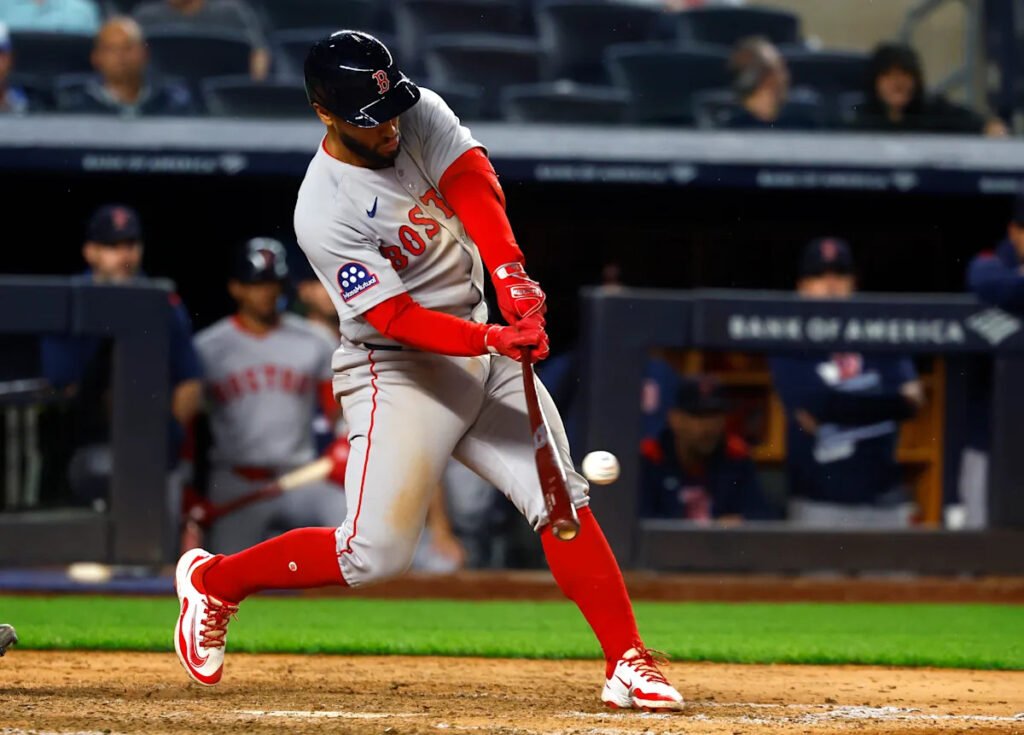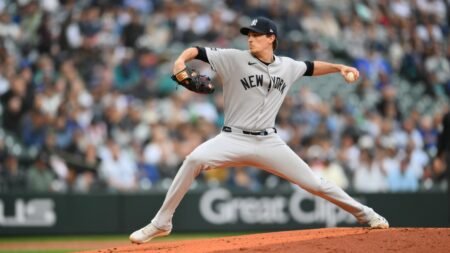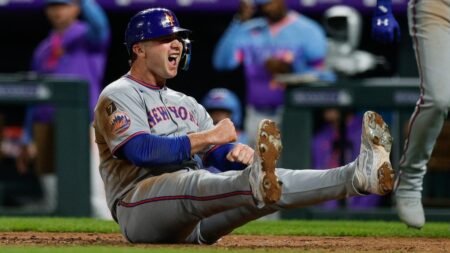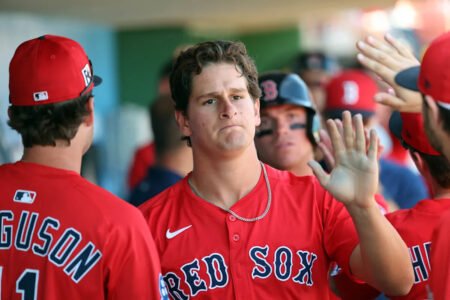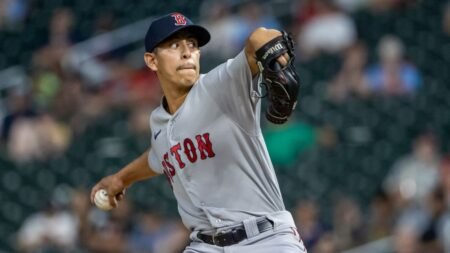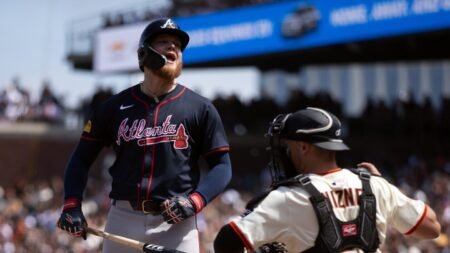The Red Sox’s roller coaster is, for the time being, climbing back uphill.
In a tumultuous season defined by chaos, inconsistency and awkward roster fits, Boston’s 11-7 win over the Yankees on Sunday secured the club’s most encouraging series win of the year so far. The Sox pitched poorly against their rivals, surrendering 23 runs over three games, but a locked-in lineup managed to overcome the team’s poor defense and pitching woes.
Advertisement
The galvanizing victory was a prime reminder that this Red Sox club, while immensely flawed, is still incredibly talented. And despite all the drama, the hand-wringing, the underwhelming record, the bad defense, the injured superstar and the underperforming rotation, Boston’s season is far, far from over.
Because this team can rake.
Even with perennial All-Star Alex Bregman on the injured list and top prospect Roman Anthony wallowing in Triple-A (until his call-up on Monday, that is), the Red Sox are finding ways to put runs on the board. They clocked five home runs Sunday in the Bronx, continuing a torrid June that has Boston’s lineup atop most leaderboards this month.
Advertisement
But besides full-time DH Rafael Devers, who’s enjoying the best statistical season of his career, much of Boston’s production has come from unlikely sources.
Rookie catcher Carlos Narvaez, acquired from the Yankees in December, has been a revelation. Since the start of May, the 26-year-old has been baseball’s best hitting catcher besides MVP candidate Cal Raleigh. Unheralded utility man Romy Gonzalez, who was 3-for-4 with a homer on Saturday, has an adjusted OPS 28% better than league average. Lefty-killer Rob Refsnyder has a .947 OPS against southpaws. And journeyman Abraham Toro, who spent the first month of the season in Triple-A, is slashing .341/.353/.573 since his call-up on May 4.
That quartet, alongside the ever-mashing Devers, has kept the Red Sox from imploding over the past five weeks.
Since the beginning of May, Boston’s 5.19 rotation ERA is the third-worst mark in MLB, better than only those of the lowly Athletics and the historically awful Rockies. To be clear, the starting pitching wasn’t much better over the weekend against the Yankees. On Friday, Walker Buehler allowed seven runs while recording just six outs. In Saturday’s victory, ace Garrett Crochet had one of his worst outings of the year. On Sunday, rookie Hunter Dobbins was sufficient in a three-earned-run start.
Advertisement
Buehler’s Game 1 meltdown — two homers and five runs in the first inning — was emblematic of Boston’s most persistent pitching issue: catastrophic first innings. The team’s 7.12 first-inning ERA would be the worst full-season mark by any club (Coors Field Rockies excluded) since 2006. It probably goes without saying that that kind of start puts an offense in an immediate hole and makes winning, well, difficult.
Buehler, whose most recent Yankee Stadium appearance came during Los Angeles’ Game 5 clincher last October, looked out of sorts on the mound Friday and out of answers in the clubhouse afterward. The typically confident right-hander admitted that he’s searching to regain his trademark on-mound conviction. Boston gave Buehler $21 million to help solidify its rotation, but since returning a few weeks ago from an IL stint, he has delivered a pair of volcanic, destabilizing starts.
But while the rotation has struggled, much of those issues are intertwined with the team’s bizarrely assembled position-player group.
Advertisement
All year, this roster has been an incoherent hodgepodge of puzzle pieces. Signing Bregman to play third base, promoting top prospect Kristian Campbell to play second and keeping Tristan Casas at first all compounded to cement Devers as the every-day DH. But Bregman and Casas are now both on the IL, leaving the corners to be occupied by some combination of Gonzalez, Toro and recent rookie call-up Marcelo Meyer.
To their credit, that group on the corners has held its own. But up the middle, things are falling apart. The Story/Campbell tandem has been worth minus-11 outs above average, one of the most reliable public defensive metrics, which is easily the worst mark in the American League. The AL “runners up” for worst middle infield OAA, Baltimore and Seattle, are tied with a distant minus-6. Only the Nationals, at minus-13, have been worse than the Red Sox.
Considering how important middle-infield defense is, Boston’s situation isn’t just ugly. It’s unsustainable.
As a team, Boston is converting only 68% of batted balls into outs, the fourth-worst rate in MLB. The Red Sox also lead baseball in errors, a flawed but still somewhat representative defensive stat. So while the rotation besides Crochet has generally underwhelmed, that group isn’t getting much help from a defense that has a number of pieces playing out of position. Rushed throws and sluggish turns have exacerbated the situation for Boston’s already thin pitching depth.
Advertisement
And here’s the truth: This team will go only as far as its run prevention allows. Which, so far, has been nowhere near good enough. How everything fits together with the addition of Anthony and once Bregman gets back later in the summer remains to be seen, but finding a way to improve the defense and the pitching will be absolutely vital if Boston is going to leap back into contention.
The bones of this team are too good and the Red Sox have too much potential to let this highly anticipated season go to waste. But this team can’t outslug its problems forever.
Read the full article here





